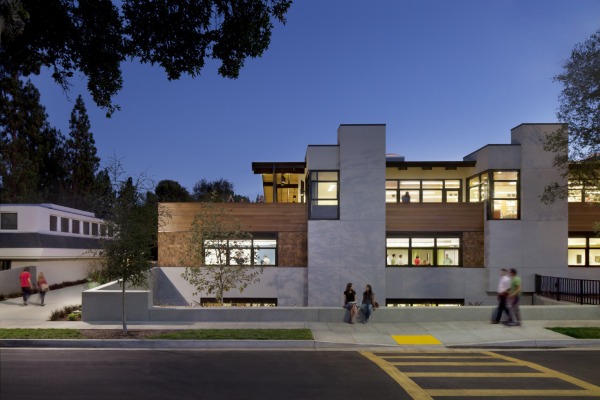 Polytechnic School’s Math and Science Building recently received LEED Gold certification under LEED Schools 2.0 by achieving a total of 48 points. The 30,000-SF Math and Science Building dramatically reshapes Polytechnic School’s high school campus, and includes math classrooms, physics, chemistry and biology laboratories, faculty offices, computer labs and a library. The new building replaces the outdated and undersized existing library and laboratory buildings, which were last updated in the late 1960s, and now provides 21st century facilities to Polytechnic School’s impressive and diverse student population.
Polytechnic School’s Math and Science Building recently received LEED Gold certification under LEED Schools 2.0 by achieving a total of 48 points. The 30,000-SF Math and Science Building dramatically reshapes Polytechnic School’s high school campus, and includes math classrooms, physics, chemistry and biology laboratories, faculty offices, computer labs and a library. The new building replaces the outdated and undersized existing library and laboratory buildings, which were last updated in the late 1960s, and now provides 21st century facilities to Polytechnic School’s impressive and diverse student population.
Sustainable features that contribute to the Math and Science Building’s 48 LEED points:
– Stormwater management design in quantity and quality
– Bicycle storage for students
– Heat island effect is reduced with cool roof and light paving material
– More than 75 percent irrigation water reduction
– More than 45 percent indoor water reduction
– Exceptional energy performance shows that the project performs 29.2% above Title 24 2005 or 23.4% energy cost reduction without photovoltaics, per energy simulation. The additional photovoltaic panels increased the energy usage reduction to 35.6% above Title 24 or a 31.5% energy cost reduction. Based on the efficiency, the project will perform approximately 60% better than typical school buildings, per the CBECS 2003 survey.
– Lighting control for all classrooms
– 25% of the total materials are from local and regional areas and contain more than 40% recycled content
– Low emitting materials for adhesive and sealants, as well as paints and coatings
– Outdoor air delivery to increase comfort and energy efficiency
– Green cleaning during operation and building maintenance
View the LEED Scorecard here >>
To achieve Polytechnic School’s sustainability goals, HMC ArchLab worked closely with the design team to integrate sustainable concepts early in the design process. The daylight simulation study gave us information to size the skylight and choose a suitable glazing system. The skylight design was adjusted a few times to meet performance goals and aesthetic design requirements. The initial skylight design option using a clear glazing system was modified with the diffused glazing system to provide better and more uniform daylight. A further study in interior impact was also assessed by looking at the luminance value. Combined with the control system, the resulting interior light energy usage is 40% less than a typical standard building.
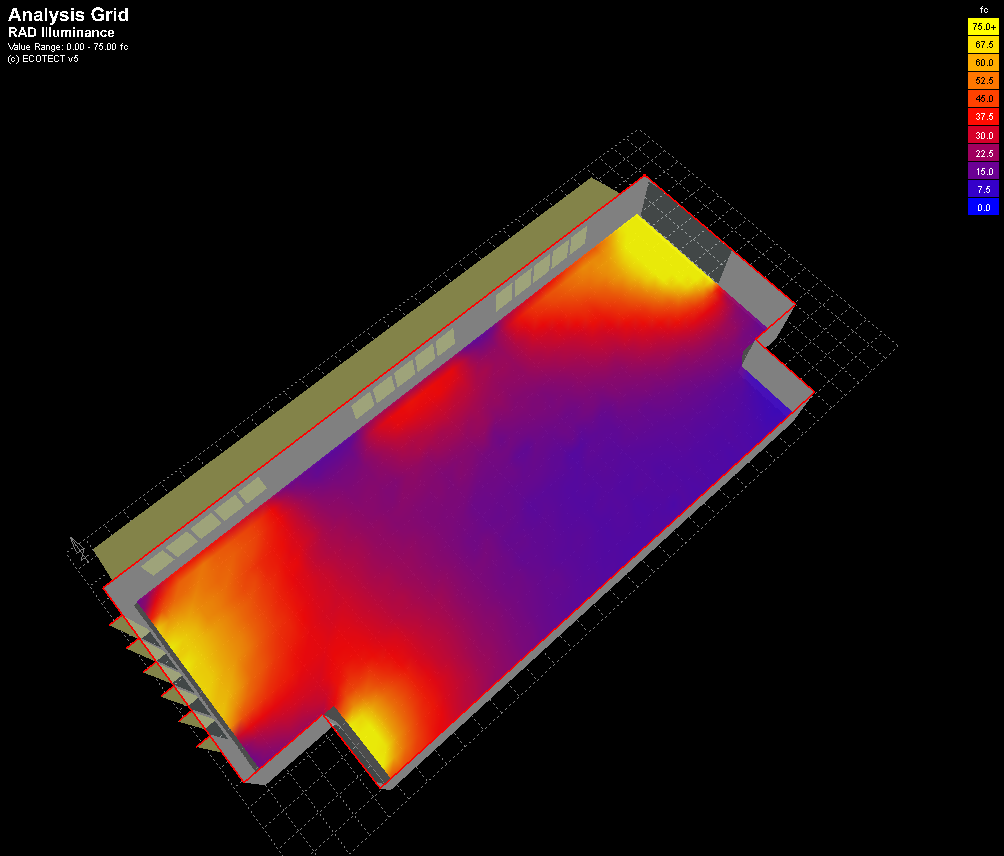

The original scheme skylight (left); the library daylight model with skylight (right).
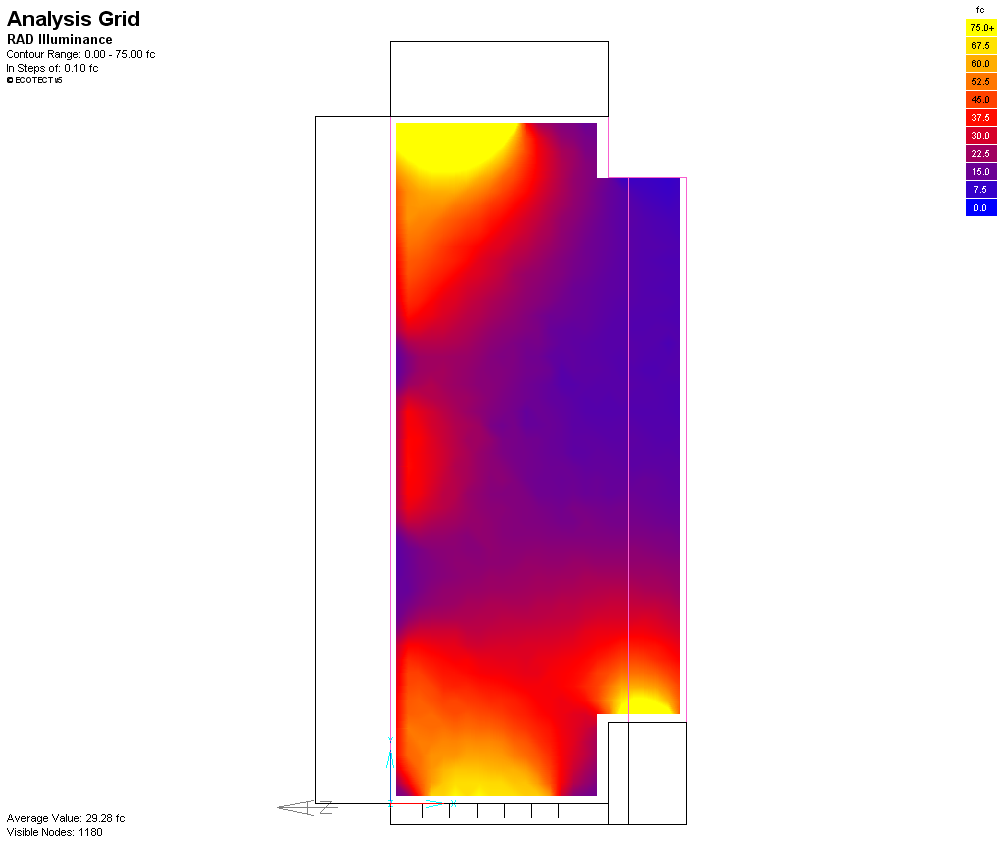
Original design
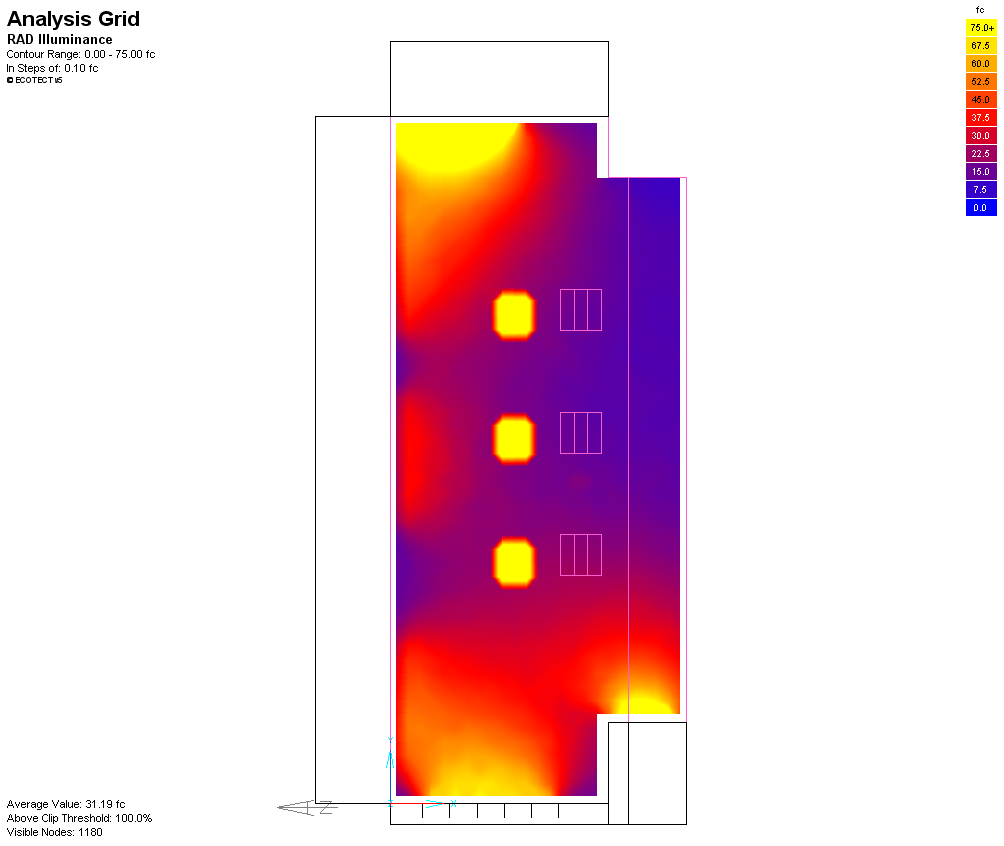
The initial skylight design with a regular glazing system showing harsh shadows and high contrast daylight inside the library area.
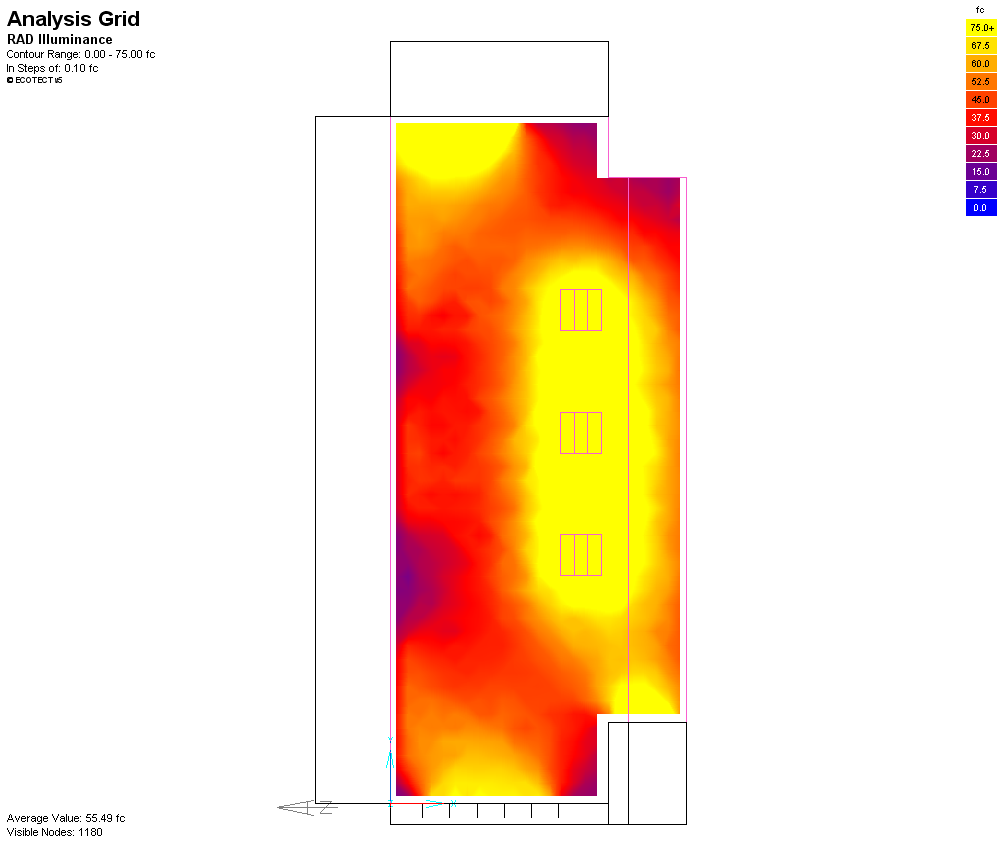
The final design scheme incorporating the diffused glazing system.

Interior Luminance study to evaluate potential glare.
Project Team:
Architect: HMC Architects
Sustainability and Daylight Consultant: HMC ArchLab
Energy Consultant: TMAD Taylor & Gaines
LEED Consultant: Buro Happold
Mechanical: TMAD Taylor & Gaines
Electrical & Plumbing: TMAD Taylor & Gaines
Landscape Architect: SE Farnum Associates
Structural Engineer: TMAD Taylor & Gaines
Commissioning Agent: Engineering Economics, Inc.
Construction Manager: Totum
